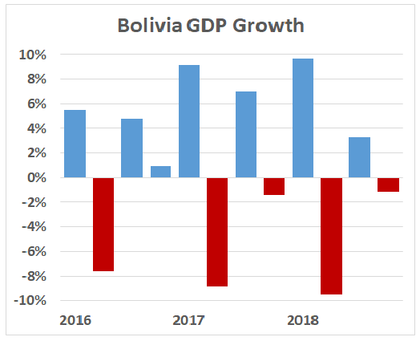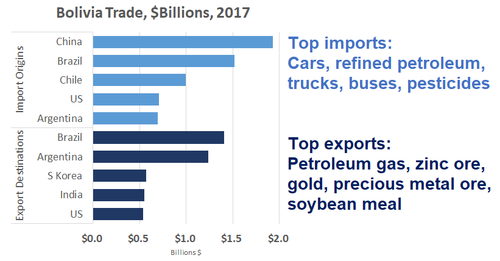Power Void in Bolivia: Associated Press
Power Void in Bolivia: Associated Press
Read the article from the Associated Press about the resignation of Bolivia’s President Evo Morles.

Uneven growth: In recent years, poverty reduction has continued but at a slower pace (Source: Trading Economics and Instituto Nacional de Estadística de Bolivia)

Stability: Bolivia is a commodities-based economy (Observatory for Economic Complexity)
The World Bank assesses Bolivia’s economy:
During the 2004-2014 decade, the Bolivian economy grew at an average annual rate of 4.9 percent due to the high commodities prices, the expansion of natural gas exports and a prudent macroeconomic policy. Consequently, moderate poverty was reduced from 59 percent to 39 percent and the Gini coefficient of inequality fell from 0.60 to 0.47.
“Due to a less favorable international context and a reduction in the gas exports, GDP growth declined from a peak of 6.8 percent in 2013 to an estimated 4.2 percent in 2018. The poverty and inequality have continued reducing, although to a slower pace…. The effect of low commodity prices has been cushioned by expansionary policies that resulted in high fiscal and current account deficits in a fixed exchange rate context….
“Between 2014 and 2019, the gross public debt, including the financial public sector debt, increased from 38 percent to about 53 percent of GDP, and fiscal savings in the Central Bank fell from 24 to around 13 percent of GDP.”